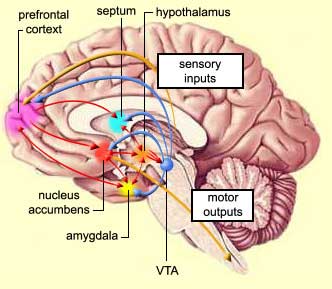Addiction Science Introduction & Menu
Click here to go directly to the Addiction Science Menu
Why are drugs so rewarding that people spend tens of billions of dollars on them every year, risking imprisonment, addiction and overdose? The answer lies in the way drugs manipulate neurons at the molecular and cellular levels.
In order to understand drugs’ affect on the brain, we provide an overview of brain functions: how the brain seeks homeostasis, or balance; the Limbic System, the brain structure responsible for feeling pleasure that’s manipulated by addictive drugs; brain cells, or neurons and neurotransmitters, their means of communication; learned versus emotional memories and their role in addiction; why the brain is inherently susceptible to addiction, and how addiction is defined.
We then delve into dopamine, the primary neurotransmitter involved in drug use, its role in emotional reward and and its part in learning, memory and motivation.
We then describe why drugs are addictive, including how drugs produce a high, how drug tolerance develops, and why relapse is common.
Genetic and environmental components of addiction are outlined, as is the evidence that there are non-drug addictions like gambling and shopping.

Thank you for this information, it explains everything ive been struggling with my entire life.
I now understand what was wrong with me and what i need to do to recover.
I will pass this on to others who are struggling like i was to find stable long term recovery.
And thank you for your kind words about the website. I sincerely appreciate knowing it’s helpful. Good luck.
steve